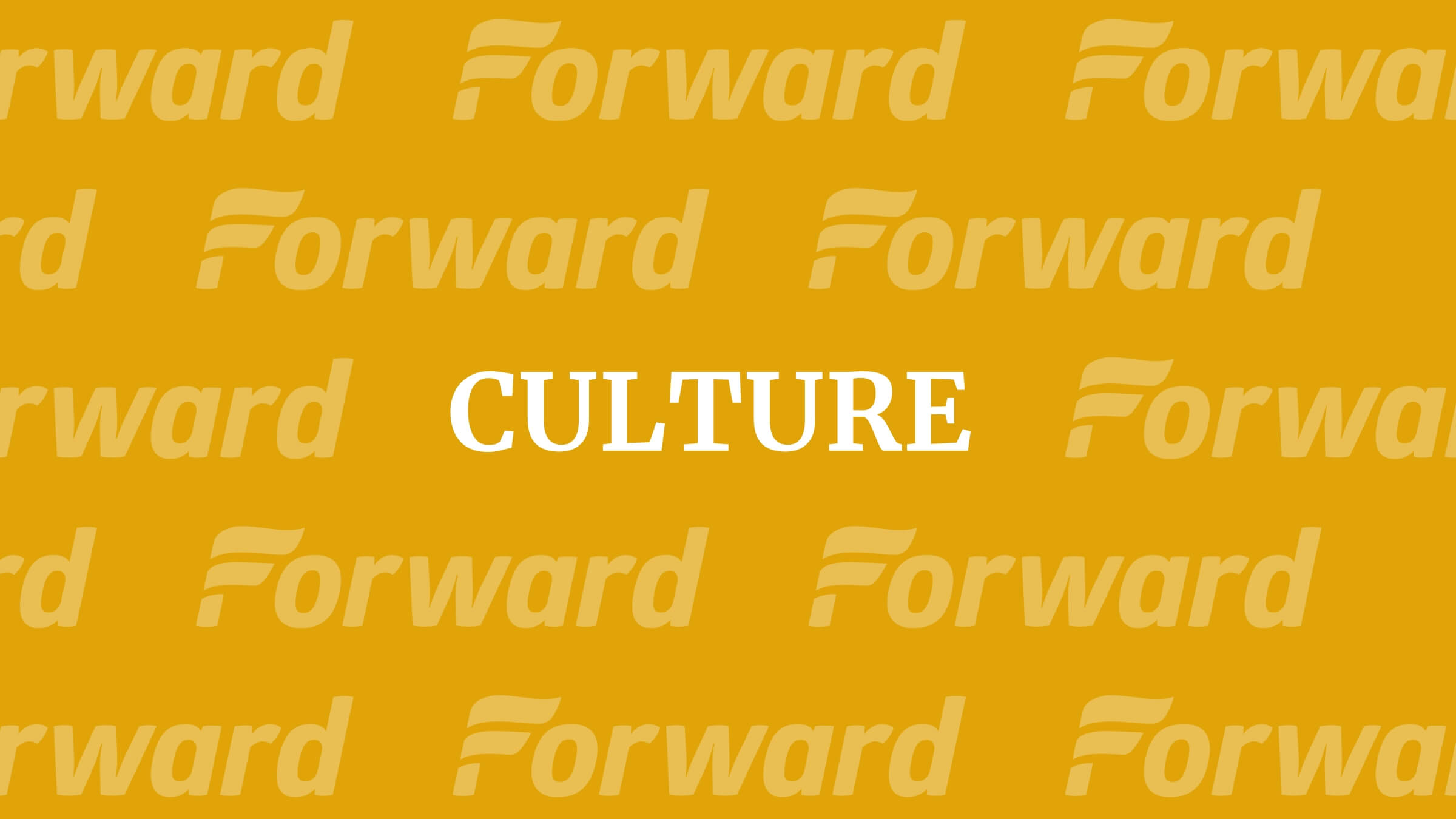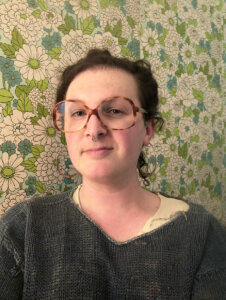Mikvehs, ‘Sex and the City’ and Judaica: How a sculptor is carving out space for queer and trans Jews
Nicki Green’s ritual objects resemble traditional Judaica, but are designed for LGBTQ people

Graphic by Angelie Zaslavsky
Every Friday before Shabbat, Nicki Green takes a long shower. With her body scrubber, she washes off the week, and then exits ready for a day of rest and reflection, the cornerstone of Jewish life.
This pre-Shabbat shower, said Green, 35, is not unlike immersing oneself in the mikveh — the purifying Jewish ritual bath.

Green herself, however, has never been to a mikveh, where traditional rituals focus on life events like childbirth or menstruation. “As someone with a visibly trans body, using a ritual space that is anchored around the gender binary feels unsafe, scary and risky,” said Green, a visiting professor and artist in residence at California State University, Long Beach.
Many rituals, like those attached to the mikveh, don’t clearly apply to Green, she said. But they also give her — and other queer, trans folks — the opportunity to “engage with them however feels generative or affirming.” Hence the pre-Shabbat shower — Green’s own version of a mikveh, for the needs of her own life.
Green, who earned her MFA from the University of California, Berkeley, in 2018, first began exploring the ancient rituals of the mikveh in her work after having something of an epiphany seven years ago, while watching a rerun of “Sex and the City.” In an iconic scene in the sixth season, Charlotte, having converted to Judaism, dips in the mikveh, the last step in the process of joining the faith. “After 75 accelerated classes,” her friend Carrie narrates, “Charlotte, the Episcopalian princess, was reborn a Jew.”
When the episode first aired in 2003, it was the first time many people had ever seen a mikveh on TV. Green, who first saw it over a decade later in 2014, fixated on the beautiful tiles of the pool in which Charlotte takes the plunge. It was a revelation. The mikveh itself, she realized, could be a ceramic object.
The moment was monumental for Green, who works mostly in clay. (In 2009, she capped her BFA from San Francisco Art Institute with a thesis show of slip-cast ceramic dildos.) As a material, clay has alchemical properties. It goes from liquid to moldable and then, fired and glazed, to vitreous but stable stone. Perhaps, too, it could help make Jewish ritual life welcoming for trans and queer people — not exclusive of them. “Clay can become anything and everything,” Green said, “and to me, that makes clay feel really trans.”
After watching Charlotte’s immersion scene, Green applied for and earned a grant from the San Francisco Arts Commission to research the artistic qualities of the mikveh at the Mayyim Hayyim center near Boston, one of several progressive Jewish efforts to reclaim and reinvent the mikveh to make it open and accessible to all who are, or are becoming, Jewish.

That experience laid the groundwork for many of the intricately and illustratively patterned ceramic ritual objects that Green has since created — for instance, a crock for Leah’s daughter Dinah, who, according to Midrash Tanchuma, transitioned from man to woman in utero. What makes Green’s objects different: They are built specifically for trans and queer Jews.
In her “Mikveh for Mycotheology,” for instance, androgynous figures ring the white-tiled interior of a wash basin. They are bent at the waist, as if in prayer, but a closer look reveals that they are harvesting mushrooms. A lone androgyne stands, their head haloed by a mushroom cap that could also be a kippah or the moon. Green’s inspiration for the piece was a book titled “The Poisonous Mushroom,” a piece of Nazi-era propaganda about toxic “Jewish” mushrooms lurking in the forest among harmless, edible mushrooms. The book’s cover is an antisemitic caricature of a bearded face beneath a mushroom cap.
By painting mushrooms, along with pansies — a nod to the homophobic slur — and other flowers connected to queerness on much of her work, Green sees herself intertwining her queer and Jewish identities. Just as the pink triangle, once used by the Nazis to identify gay prisoners, has been reclaimed as a symbol of LGBTQ pride, Green seeks to recast derogatory concepts and images as ones of empowerment.
Mushrooms, Green pointed out, filter out toxins in soil and waterways, thriving in hostile environments. And they reproduce both sexually and asexually and have thousands of different sexes, radically rejecting the gender binary.
Seen with that context, “Mikveh for Mycotheology” becomes more than a bold dismissal of antisemitic imagery and challenge to gender norms in Judaism. It’s a celebration of the legitimacy and wonders of lives that appear “different,” whether because of religion, gender, sexual orientation, or more.
As a child who grew up Reform Jewish in a suburb of Boston, Green was fascinated by Judaica: Kiddush cups, Shabbat candle holders and Hanukkah menorahs. Those objects encompassed many of the Jewish memories she has from her youth, a time when she felt disconnected from Judaism, largely because she didn’t know any other LGBTQ Jews.
“Growing up, I didn’t see myself or my experiences mirrored back to me, and therefore felt like there wasn’t a place for me in my Jewish community,” she said.
Producing ritual objects specifically for queer people helped her find a way back into Judaism in her adult life. She was inspired to relate her LGBTQ and Jewish identities in her artwork after going to the SVARA Queer Talmud Camp outside Petaluma, California, in 2016, where she studied Jewish texts through the lens of queerness and learned that, though much of traditional Judaism emphasizes two genders, notions of gender fluidity date back to the beginning of Jewish thought.

Engaging in a creative reimagining of traditional Jewish objects, Green said, is a queer tactic — similar to her pre-Shabbat shower — of “taking the material of the world around us and reshaping it into something that works for us and allows us to be more fully who we are.”
“For me, transness is certainly about my presentation,” she said, “but it’s also about the relationship between my body and the world around it.”
For instance, she said, she sees the holes in her jeans where her thighs rub together as not just a sign of her changing body, but also a symbol of the world’s inability to withstand the force of her body against it.
Transness, she added, is “about movement, change and transformation — coming together, moving apart and coming back together again.”
Because the experience of being othered, though disproportionately felt by members of marginalized communities, is universal, anyone — regardless of whether they are LGBTQ (or Jewish) — can gain something from her reimagining of ritual objects, she said.
“I would hope that it offers others opportunities or inspiration to be creative,” she said, “and interrogate the world and boundaries set around them.”





















